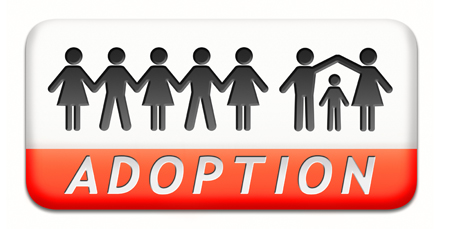Words have Meaning: Respectful Adoption & Person First Language

Words Have Meaning
I first learned about the use of Respectful Adoption Language (RAL) from Patricia Irwin Johnston more than twenty years ago. RAL refers to attribution of “maximum respect, dignity responsibility and objectivity when working and communicating about adoption. The term was introduced originally by a social worker named Marietta Spencer.
Some may think this is about political correctness. It is not. Some words in different settings and scenarios have the ability to be emotionally charged and not in a good way. For example asking a mom if the child in tow is their “natural child” as opposed to what – an unnatural child? Or asking, “Is that your real mother?” Really, use of RAL can diffuse the emotional overcharging that comes with adoption. Use of RAL validates that those carefully planning an adoption placement are thoughtful and practical people trying to made the best child-centered plan for the baby in question. After all, the adoption triad while a happy event for the intended parents may be devastating for the mother who places her child with an adoptive family. There is always loss within the adoption triad (even if it is not evident). It is common for many individuals to throw language and adoption terms around without thinking or necessarily having the “real” and complex family experience of adopting a child.
The application of respectful use of language is really common sense (which appears to be often in short supply).
What Constitutes a Family?
Historically people are considered members of a family when there is a “blood” relationship or strong social link to the other family members. (i.e. marriage between men and women, father and mother to children, siblings and their offspring) but an adoption links parents to their child by love and the law. Have you ever heard anyone a relative by saying, “this is John’s adopted son Harry”? Or worse having a parent introduce their child by saying, “This is our adopted daughter, Karen.” Would anyone introduce their child by qualifying their introduction with, “Hello, this is my vaginal birthed child, Jeff.” or “This is my vasectomy failure daughter Jesse.”? I think not. These are introductions suggestive of relationships are abnormal or not as genuine as “blood relationships”. Asking anyone if someone who raised them is their “real mother” is disrespectful and filled with negativity. Because my younger child is not white (like her sibling and parents) and has a disability, we are often asked, of we knew she had disabilities before we adopted her. As if to suggest maybe we could return her and get a refund!
Family definitions change as people become more enlightened. Any two people that make a commitment and chose a life together are a family. It matters not whether they decide to live childfree, give birth to half a dozen children or adopt a child. Making the decision to parent is based on intent.
Person First Language Parallels Respectful Adoption Language
A relationship exists with person first language and respectful adoption language. Those who have a disability are often referred by their disability label (autistic, wheelchair bound, disabled). This type of language can attach a disability to the person and ignore the individual personalities and characteristics that make that person who they are. Instead of incorporating their disability into their description, (Autistic) putting the person first (young man with a diagnosis of autism) emphasizes the person and not the disability. Person first language was adopted by psychological community to try to de-stigmatize persons with disabilities. There is a parallel with person first language and RAL. Paying attention to person first and respectful adoption languages makes us think about our words and reflect on them. Words have meaning and should carefully select words to convey meaning.
Labels can degrade and objectify people. They can dehumanize and humiliate too. People should not be labeled. When meeting a person the only expectation should be who that person is as an individual. Family-building through the act of adoption (and those with disabilities) all want the same thing as the rest of the population. We all want to be treated with respect and dignity. If we label people as “adopted from (you fill in the blank) or wheelchair bound or intellectually challenged, we handicap their prospects by having already defining them with some type of negative language. Keep expectations high, select words carefully and enjoy everyone as a unique individual by using respectful adoption and person first language.
